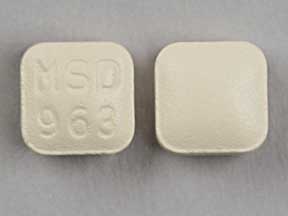Pepcid Disease Interactions
There are 2 disease interactions with Pepcid (famotidine).
H2 antagonists (applies to Pepcid) GI bleeding
Major Potential Hazard, Moderate plausibility. Applicable conditions: Gastrointestinal Hemorrhage
Histamine H2 receptor antagonists should not be used in the presence of vomit with blood, or bloody or black stools. These might be serious conditions and the diagnosis needs to be ruled out.
Famotidine (applies to Pepcid) renal dysfunction
Moderate Potential Hazard, High plausibility.
Famotidine is partially eliminated by the kidney as unchanged drug, the extent of which is dependent upon the route of administration (25% to 30% oral; 65% to 70% intravenous). The elimination half-life of famotidine may be prolonged considerably in patients with severe renal impairment (CrCl < 10 mL/min), possibly exceeding 20 hours and approaching approximately 24 hours in anuric patients. Since central nervous system adverse effects such as grand mal seizures and psychic disturbances have been reported in patients with moderate (CrCl < 50 mL/min) and severe renal impairment, dosage adjustments are recommended for these patients. Reducing the normally recommended dosage by one-half or prolonging the dosing interval to 36 to 48 hours may be appropriate, depending on the patient's clinical response.
Switch to professional interaction data
Pepcid drug interactions
There are 317 drug interactions with Pepcid (famotidine).
Pepcid alcohol/food interactions
There is 1 alcohol/food interaction with Pepcid (famotidine).
More about Pepcid (famotidine)
- Pepcid consumer information
- Check interactions
- Compare alternatives
- Pricing & coupons
- Reviews (10)
- Drug images
- Side effects
- Dosage information
- During pregnancy
- Support group
- Drug class: H2 antagonists
- Breastfeeding
- En español
Related treatment guides
Drug Interaction Classification
| Highly clinically significant. Avoid combinations; the risk of the interaction outweighs the benefit. | |
| Moderately clinically significant. Usually avoid combinations; use it only under special circumstances. | |
| Minimally clinically significant. Minimize risk; assess risk and consider an alternative drug, take steps to circumvent the interaction risk and/or institute a monitoring plan. | |
| No interaction information available. |
See also:
Further information
Always consult your healthcare provider to ensure the information displayed on this page applies to your personal circumstances.


